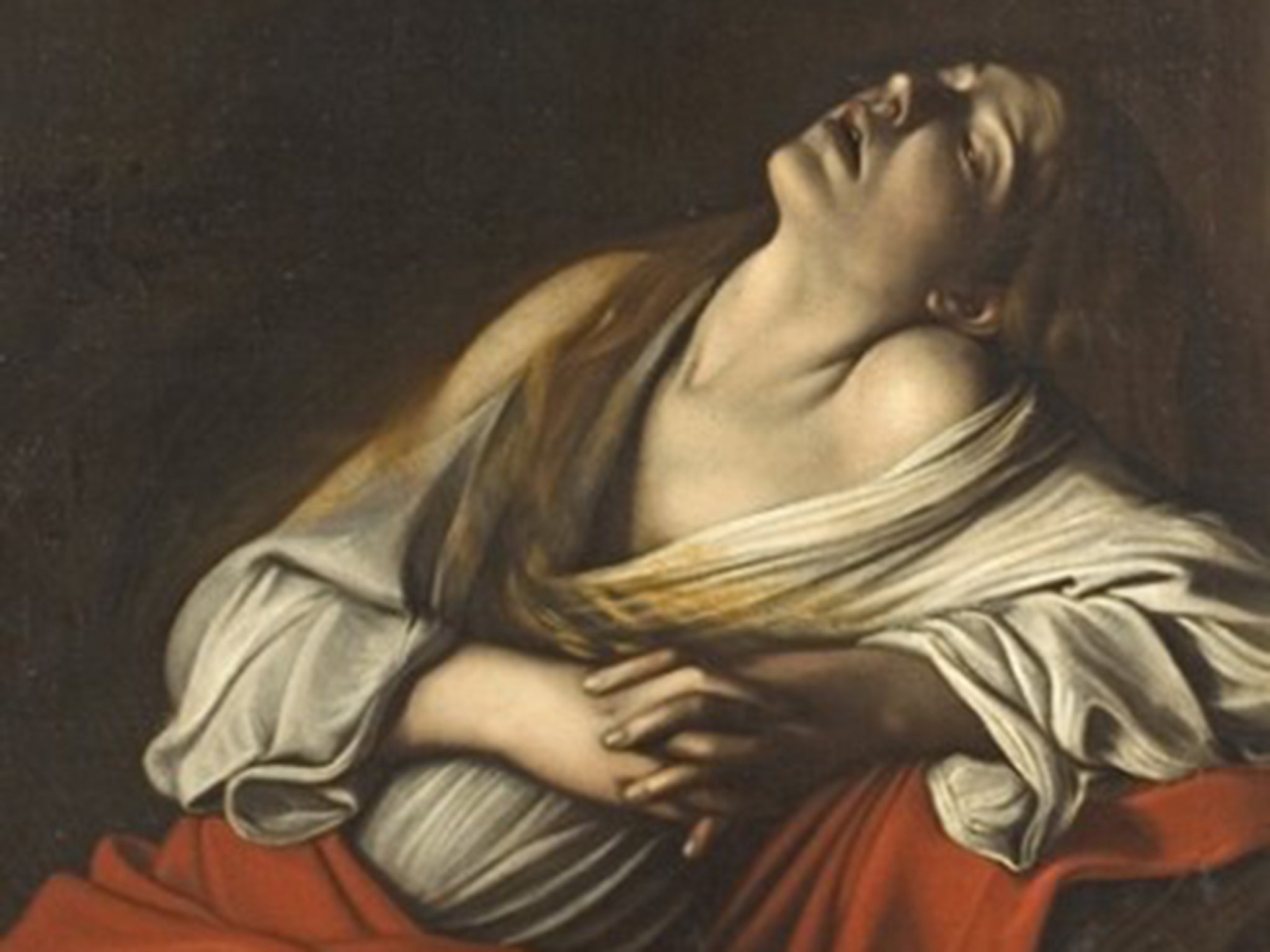Revolutionary lost Caravaggio painting 'Mary Magdalen in Ecstasy' identified
Several copies of Mary Magdalen in Ecstasy are thought to exist

Your support helps us to tell the story
From reproductive rights to climate change to Big Tech, The Independent is on the ground when the story is developing. Whether it's investigating the financials of Elon Musk's pro-Trump PAC or producing our latest documentary, 'The A Word', which shines a light on the American women fighting for reproductive rights, we know how important it is to parse out the facts from the messaging.
At such a critical moment in US history, we need reporters on the ground. Your donation allows us to keep sending journalists to speak to both sides of the story.
The Independent is trusted by Americans across the entire political spectrum. And unlike many other quality news outlets, we choose not to lock Americans out of our reporting and analysis with paywalls. We believe quality journalism should be available to everyone, paid for by those who can afford it.
Your support makes all the difference.The long-lost Caravaggio painting that the baroque master had with him when he died in 1610 has finally been identified, according to the world’s foremost authority on the artist.
Several copies of Mary Magdalen in Ecstasy are thought to exist. But now the Caravaggio scholar Mina Gregori has said she is confident of having made a “definitive” verification of the version that she has studied in a private European collection.
After years hunting for the real thing, the eminent art expert and president of Florence’s Roberto Longhi Art History Foundation, declared: “At last, it’s you”, after finding herself seemingly gazing at the Caravaggio original. If true, the discovery would be one of rare importance in Western art.
Ms Gregori said key characteristics of the painting, the first ever photograph of which was printed in La Repubblica yesterday, left no doubts in her mind regarding its provenance. “The creation of a body with varying tones, the intensity of the face. The strong wrists, crossed fingers and beautiful hair … the wonderful variations in light and colour – all show that it is Caravaggio,” she said.
She added that the discovery of a handwritten note attached to the back of the 103.5cm by 91.5cm painting, attributing it to Caravaggio, and denoting it is a commission by one of his important patrons, Cardinale Scipione Borghese of Rome, was the final proof. The family, who contacted Ms Gregori for the authentification, have said they have no intention of selling it.
The existence of a version known as the “Klein Magdalena” in Rome, which some experts have described as authentic, suggests that further controversy is not out of the question. Ms Gregori told The Independent she was pressing the owners of the version she says she has authenticated to make it available for some sort of public display. “Even by Caravaggio’s standards this is a beautiful and revolutionary painting,” she said. “The ultimate goal is that everyone should have the opportunity to see it. But for now all I can say is that it’s in Europe.”
Caravaggio, born Michelangelo Merisi, is celebrated for his revolutionary use of contrasting light and dark – chiaroscuro – that anticipated the work of later baroque giants including Rembrandt and Velazquez.
He was thought to have painted the Magdalen in 1606, shortly after fleeing Rome following his conviction for murder. It was during his return to the city in search of a papal pardon, carrying with him the painting, that he was believed to have become ill with fever, and died in Tuscany.
Join our commenting forum
Join thought-provoking conversations, follow other Independent readers and see their replies
Comments